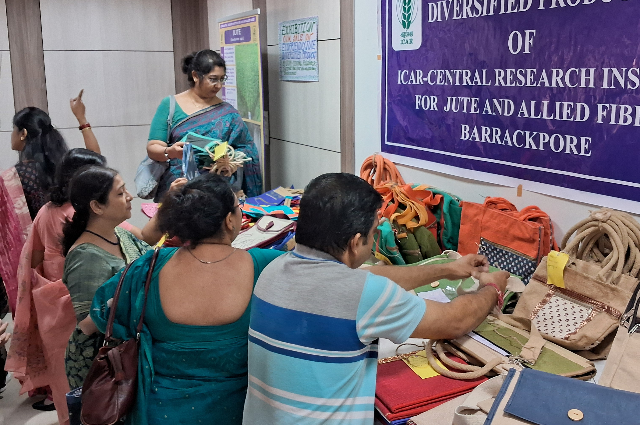
World Biodiversity Day, also known as the International Day for Biological Diversity, is observed on May 22 each year. This day aims to increase understanding and awareness of biodiversity issues. In 2024, the theme for World Biodiversity Day is "From Agreement to Action: Build Back Biodiversity," focusing on the successful implementation of global agreements on biodiversity and the importance of restoring ecosystems to protect and sustain the planet's biodiversity. Various events, activities, and campaigns will be held worldwide to highlight the significance of biodiversity and the urgent need for collective action to conserve and restore it. The theme for World Biodiversity Day 2024 has been: 'Be a part of the plan'.
The World Biodiversity Day was celebrated on 24.05.24 and organized by the Central Research Committee and the Department of Botany, Shri Shikshayatan College in collaboration with the Science Association of Bengal (SAB), Kolkata at the Shri Shikshaytan College campus. An Intra and inter-college student event was organized under various categories, such as Poster, PowerPoint and Video presentations, Extempore, Doddle Art & Collage, and Craft & Model preparation; based on sub-themes.

Following registration, a large number of students both from the college and other institutes, attended the program in large numbers. The welcome address was delivered by the Honourable Teacher in Charge, Sri Shikshaytan College followed by a short speech on the Importance of International Celebrating Biodiversity Day by Saikat Kumar Basu representing the Science Association of Bengal. Renowned scientists including Dr A. K. Singh and others were invited from the prestigious Centre for Research in Jute and Allied Fibers (CRIJAF), ICAR, Barrackpore to chair various sessions, serve as judges for student competitions and hand out prizes to the best-performing students in the valedictory session.
The CRIJAF team presented an excellent display and sale unit with products made of jute and allied fibres, made by local women as a part of their outreach practice. Later Dr. Singh made an erudite presentation on the eco-friendly initiatives of CRIJAF. Certificates, prizes and food packets were handed to the students. Both CRIJAF team members and SAB representatives served as judges for the various student competitions along with in-house judges (faculty members) from the Sri Shikshaytan College.

The success of celebrating World Biodiversity Day 2024 jointly by the college and SAB can be gauged through several key indicators:
Increased Awareness:
Greater public awareness about biodiversity and its importance is a primary measure of success. This can be seen through widespread media coverage, social media engagement, and educational activities that reach a broad audience.
Policy Impact:
Effective celebration often leads to policy changes or the reinforcement of existing policies aimed at protecting biodiversity. This includes new legislation, improved conservation strategies, and increased funding for biodiversity projects.
Community Engagement:
Active participation from communities, schools, NGOs, and local governments in events such as tree planting, clean-up drives, educational workshops, and biodiversity fairs indicates successful engagement.
Corporate Participation:
The involvement of businesses in biodiversity-friendly practices and sponsorship of conservation projects can be a sign of successful celebration. Corporate commitments to sustainability and biodiversity can amplify the impact.
Scientific Advancements:
Enhanced focus on biodiversity can lead to increased research efforts, resulting in new scientific findings, conservation techniques, and improved biodiversity databases.
Global Cooperation:
Successful celebrations often foster international cooperation and partnerships aimed at addressing biodiversity loss on a global scale, aligning with international agreements like the Convention on Biological Diversity.
Positive Behavioral Changes:
Long-term success can be seen in changes in individual and collective behaviour towards more sustainable practices that support biodiversity conservation, such as reduced use of plastics, sustainable farming practices, and conservation-friendly tourism.
Evaluating these aspects post-celebration helps in understanding the effectiveness of World Biodiversity Day in achieving its goals and informs future strategies for biodiversity conservation.
